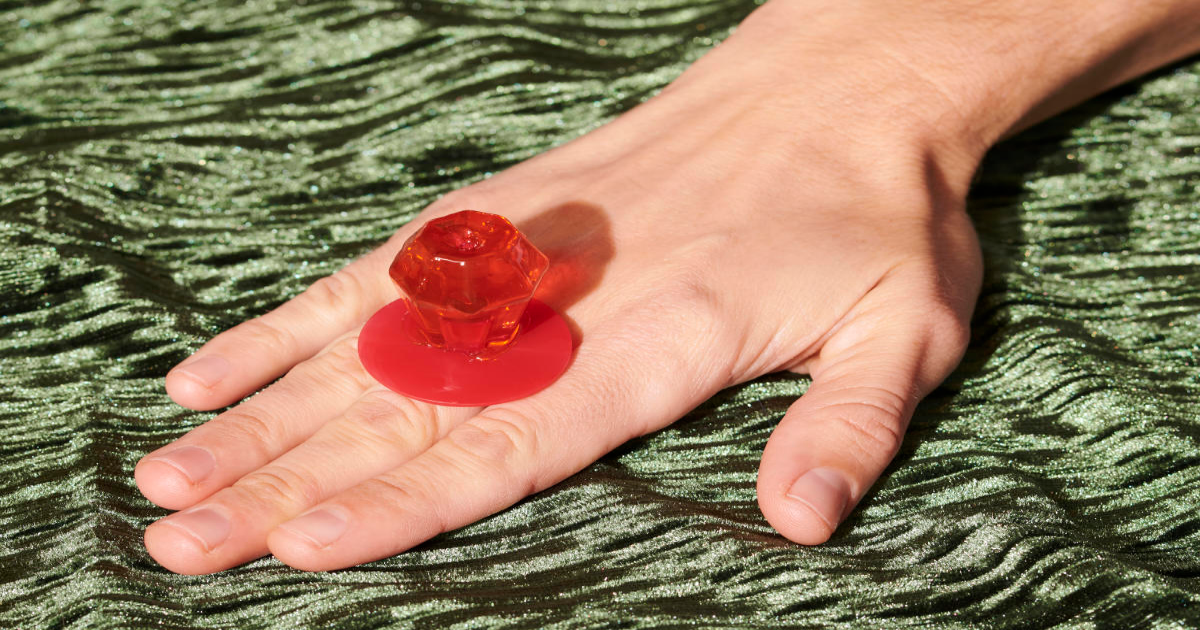Health Secretary Robert F. Kennedy Jr. announced Tuesday that the Department of Health and Human Services and the Food and Drug Administration will phase out all petroleum-based artificial food dyes from the nation’s food supply — a move that is considered a key part of his Make America Healthy Again agenda.
In January, before President Joe Biden left office, the FDA announced it was revoking its authorization of red dye No. 3, which is used in some foods and medications and was one of nine FDA-approved synthetic dyes made from petroleum.
In a statement issued Tuesday afternoon, HHS and the FDA said it is requesting that food companies stop using red dye No. 3 ahead of the previously established 2027-2028 deadline. The agencies also outlined a plan to revoke authorization for two other synthetic food dyes, Citrus Red No. 2 and Orange B, in the coming months. They said they plan to phase out the six remaining artificial food colorings, including Red. No. 40, from the U.S. food supply by the end of next year.
What is red dye No. 40?
Red dye No. 40, aka Allura Red, is one of the most commonly used synthetic food dyes in the U.S. and Canada, Dr. Kelly Johnson-Arbor, a toxicologist at MedStar Health, tells Yahoo Life. “The FDA approved red dye No. 40 for use in food in 1971, and it is currently used to enhance the appearance of various sodas, cereals, baked goods and other foods,” she says.
Red dye No. 40 has been deemed safe for consumption by the FDA, European Food Safety Authority and other regulatory bodies, as long as the intake stays below the established acceptable daily intake (ADI), Scott Keatley, a registered dietitian and co-owner of Keatley Medical Nutrition Therapy, tells Yahoo Life.
“Both major organizations have listed this product at 7 mg/kg/day as acceptable intake,” Keatley says. “This means that an individual weighing 70 kg (154 lbs.) could theoretically consume up to 490 milligrams of red dye No. 40 daily without expected adverse effects, according to these guidelines.” Keatley also points out that ADIs “are set with a significant safety margin and are intended for lifetime exposure.” In other words, several major organizations have deemed red dye No. 40 as safe for consumption.
What’s the deal with these other dyes?
Red dye No. 3 , which has already been banned by the FDA. (Linnea Bullion for the Washington Post via Getty Images)
Other common food dyes — including yellow dyes Nos. 5 and 6, blue dyes Nos. 1 and 2 and green dye No. 3 — are synthetic additives, Jamie Alan, an associate professor of pharmacology and toxicology at Michigan State University, tells Yahoo Life. The dyes are widely used, likely because they’re inexpensive, Alan says.
But some companies have completely shifted away from synthetic dyes and instead focused on natural food coloring, like curcumin, carotenes, paprika and anthocyanins, Johnson-Arbor says. Unfortunately, these have their own challenges.
“Although these food-coloring agents are derived from natural sources, they do have some disadvantages when compared to synthetic dyes,” she says. “Natural food colors may be less colorful in appearance, more costly to produce and less shelf-stable than their synthetic counterparts and foods colored with some natural colors may be less desirable to consumers because of these factors.”
Where are these dyes commonly found?
The dyes can be found all over. “Synthetic food dyes are used in various types of foods that we consume every day, including baked goods, dairy products and certain fruit products,” Johnson-Arbor says. “Synthetic food dyes are also used to give pharmaceutical products and dietary supplements, including cough syrups, liquid pain relievers, allergy medications and gummy vitamins a desirable appearance.” Synthetic food colors are “frequently” added to children’s medications, she adds.
Some big-name products where synthetic dyes can be found include:
How can these dyes impact health?
Research into all of these dyes is ongoing, but there is some data to suggest they’re not great for your health. The biggest link is between the dyes and behavioral issues in children.
A report published by the California Office of Environmental Health Hazard Assessment in 2021 analyzed data from human and animal studies and concluded that synthetic food dyes are linked with hyperactivity and neurobehavioral problems in children. Those studies included observational studies (where researchers tried to link health outcomes with the dyes) along with “challenge studies,” where kids were asked to avoid dyes for a few weeks and then given products with dyes added to them.
The researchers discovered that, while not all kids were impacted by the synthetic dyes, some were more likely than others to act out after having them. The researchers ultimately found that 16 out of 25 studies analyzed found a link between kids who had the dyes and poor behavior. That link was also considered statistically significant in more than half of the studies.
“I expect that this decision will open up the conversation around other dyes,” Alan says. “Red dye No. 40 can still cause behavioral disruptions, especially in children. Currently, it is not listed as a carcinogen, but it does contain benzene, which has been correlated with cancer.”
But Keatley says that synthetic dyes don’t necessarily need to be demonized. Instead, he recommends that people consider the context for their use. Natural dyes, he notes, “can be less stable and more expensive to produce,” which makes synthetic options preferable in some cases.
Synthetic dyes like blue No. 1 or yellow No. 5, “are generally safe within regulatory limits but may sometimes cause allergic reactions or behavioral issues in susceptible individuals,” Keatley adds. “While ‘natural is better’ is a useful generalization, it’s critical to balance this with practicality, stability and individual tolerance,” he says.
Alan, though, says that phasing out synthetic dyes from the food supply was inevitable.
“There is no benefit to synthetic dyes — other than profit — and there is no acceptable use for these,” she says.



